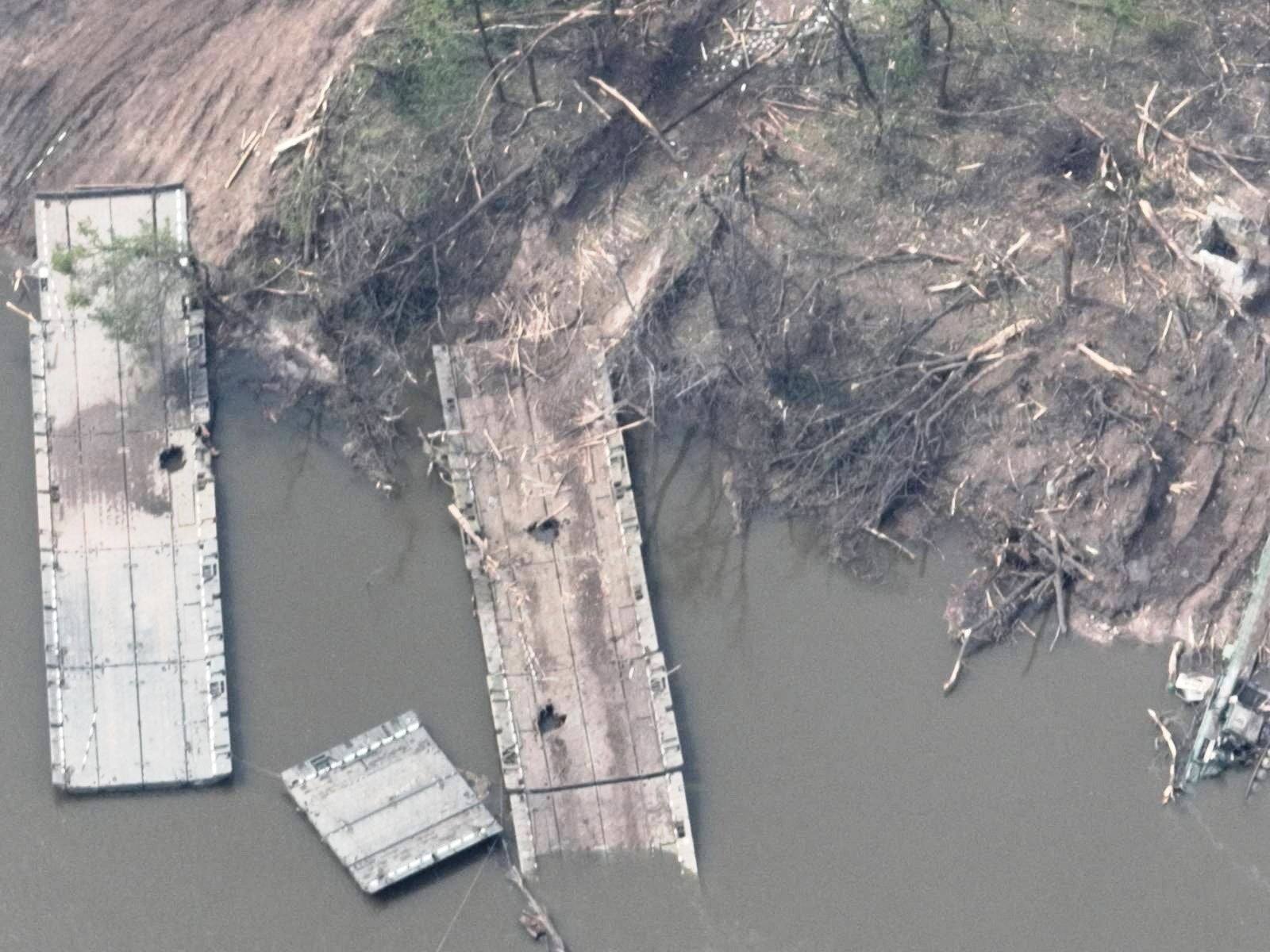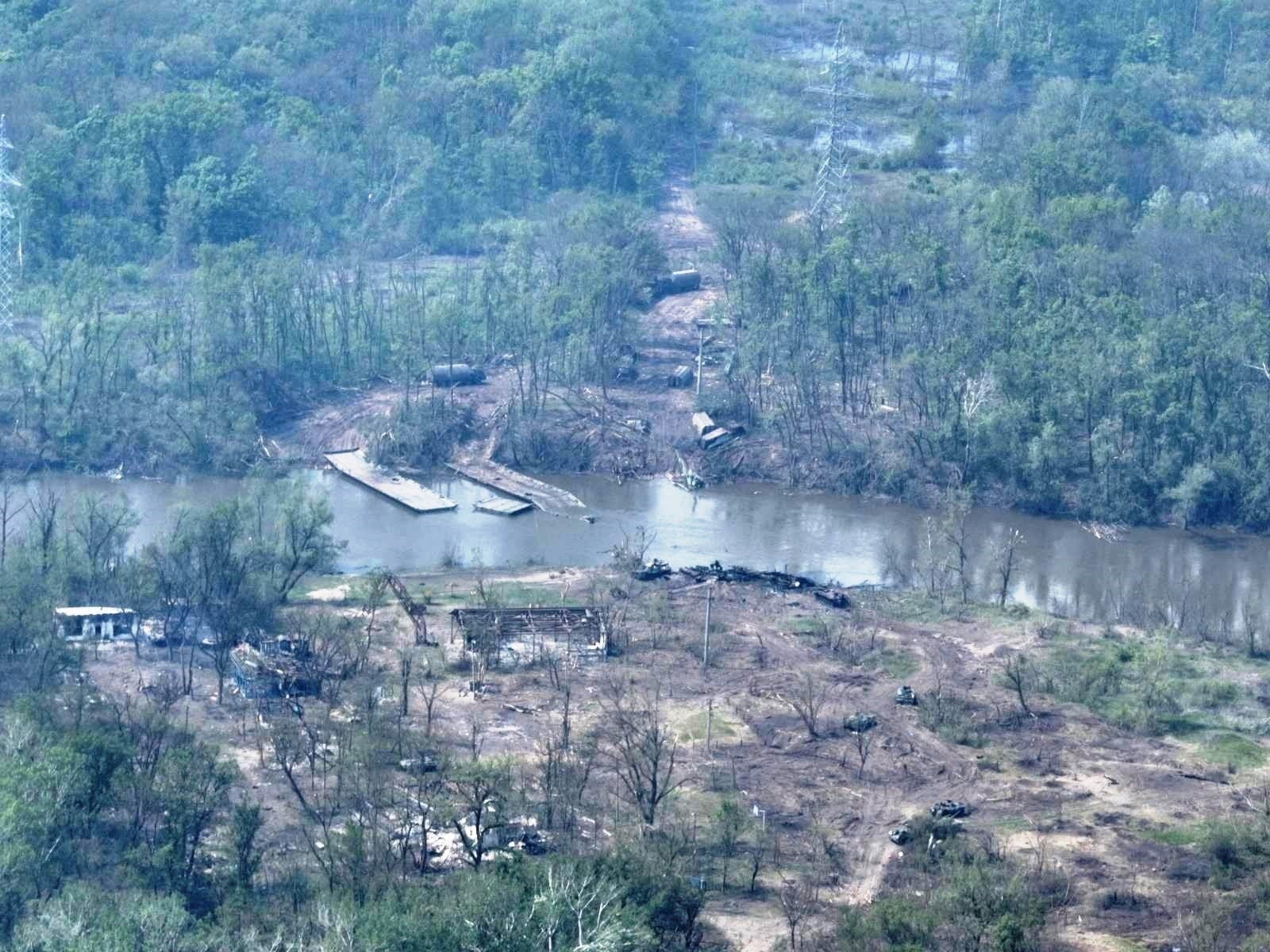Russian army ‘lose entire battalion’ trying to cross Ukraine bridge
British intelligence says Russian forces are likely to redeploy to eastern bank of Siverskyi Donets river
Your support helps us to tell the story
From reproductive rights to climate change to Big Tech, The Independent is on the ground when the story is developing. Whether it's investigating the financials of Elon Musk's pro-Trump PAC or producing our latest documentary, 'The A Word', which shines a light on the American women fighting for reproductive rights, we know how important it is to parse out the facts from the messaging.
At such a critical moment in US history, we need reporters on the ground. Your donation allows us to keep sending journalists to speak to both sides of the story.
The Independent is trusted by Americans across the entire political spectrum. And unlike many other quality news outlets, we choose not to lock Americans out of our reporting and analysis with paywalls. We believe quality journalism should be available to everyone, paid for by those who can afford it.
Your support makes all the difference.The Russian army has suffered heavy losses, including the destruction of around three dozen tanks, after the Ukrainian army blew up a pontoon bridge over the Siverskyi Donets river in the Luhansk region, according to reports.
Satellite images collected by geospatial intelligence firm BlackSky show that a pontoon bridge – used primarily but not invariably for military purposes – was destroyed on 10 May after Ukrainian artillery struck the bridge and surrounding area.
The images show smoke emanating from the half-sunken bridge with destroyed armoured vehicles lying on the shores of the Siverskyi Donets river, running west to east between Russian rebel-controlled provinces of Donetsk and Luhansk in eastern Ukraine.
On Wednesday, the Ukrainian defence ministry shared the same images, saying Ukrainian ground forces, artillerymen of the 17th tank brigade, “have opened the holiday season for ruscists”, referring to Russian soldiers.
“Some bathed in the Siverskyi Donets River, and some were burned by the May sun,” it said.
Serhii Haidai, head of the Luhansk Regional Military Administration, said the Russian army created a bridge to transfer military gear and personnel but all pontoons were destroyed along with equipment and troops.
“In Bilohorivka, where the enemy tried to create a solid crossing and transfer equipment and personnel to our side, he was partially successful, but now all pontoon crossings have been destroyed, all equipment has been destroyed and the remaining personnel have either been killed or have fled by swimming across to the other side.”

According to an estimate by Forbes, around 50 vehicles and up to a thousand troops were caught by Ukrainian artillery and were destroyed, effectively taking out an entire battalion, in what would be a major blow to the Russian army.
There were around three dozen tanks and other armoured vehicles lying destroyed along the river after the successful strike by the Ukrainian army, it reported.
The US defence department on Tuesday said that the movement of Russian ground forces in Donbas “is slow and uneven”.
According to British army intelligence, Russia forces are reportedly likely to redeploy, after replenishing the losses, to the eastern bank of the Siverskyi Donets river.
Meanwhile, as the war drags on, Ukraine has offered the first proposal of its kind to seek negotiations for a prisoner swap. Ukraine has offered the release of Russian prisoners of war in exchange for the severely hurt fighters trapped inside Mariupol’s Azovstal steel mill.

Deputy prime minister Iryna Vereshchuk said on Wednesday that they have considered a number of different options but “none of them is ideal”, as she confirmed that negotiations for a prisoner swap were underway.
Around 2,500 Ukrainian troops, 700 of whom are wounded, are believed to still be holed up in the Azovstal steel plant, much of which has been bombarded to rubble.
The Independent has a proud history of campaigning for the rights of the most vulnerable, and we first ran our Refugees Welcome campaign during the war in Syria in 2015. Now, as we renew our campaign and launch this petition in the wake of the unfolding Ukrainian crisis, we are calling on the government to go further and faster to ensure help is delivered.
To find out more about our Refugees Welcome campaign, click here. To sign the petition click here. If you would like to donate then please click here for our GoFundMe page.

Join our commenting forum
Join thought-provoking conversations, follow other Independent readers and see their replies
Comments